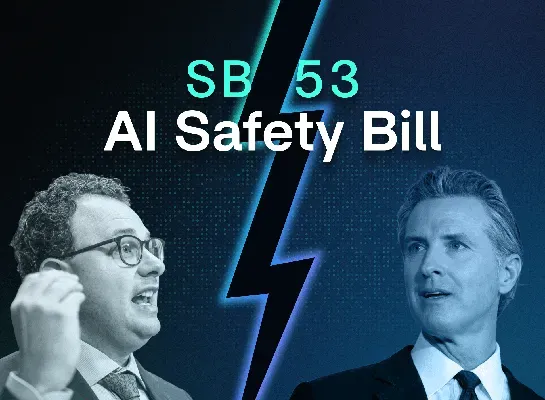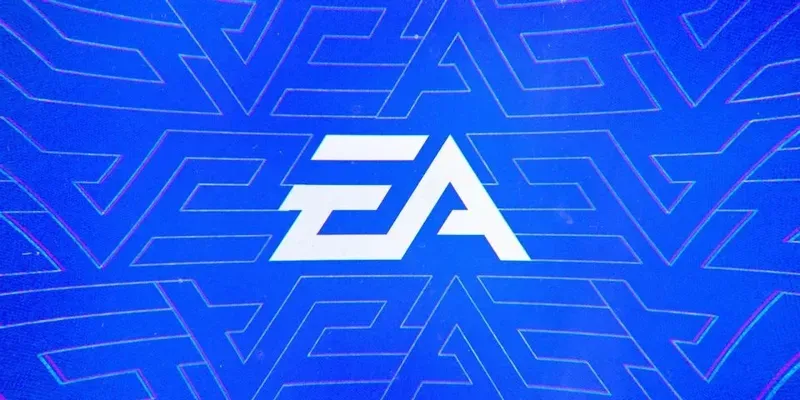In a significant move toward regulating artificial intelligence, California SB 53 AI safety has captured the attention of policymakers and tech enthusiasts alike. This newly approved AI safety bill aims to provide essential checks on the power of big AI companies, specifically targeting those with annual revenues exceeding $500 million. With growing concerns regarding the influence of major tech firms, California’s latest AI safety legislation reflects a proactive approach to managing AI risks and ensuring accountability. By requiring these companies to publish safety reports and report incidents to the government, SB 53 sets a strong precedent for California AI regulations. As the conversation around AI safety intensifies, it is crucial to understand how such measures may impact the landscape dominated by big AI companies and their operations.
California’s recent initiative, known as SB 53, marks a pivotal development in the realm of artificial intelligence governance. This legislation seeks to introduce vital oversight for large tech corporations harnessing AI technologies, effectively delineating regulatory frameworks specifically for these industry giants. As society grapples with the implications of advanced AI systems, the tightening of standards and safety protocols could shape the future of tech company regulations across the nation. Supporters argue that this AI safety bill will not only bring transparency but also foster a culture of accountability within the AI sector. By adopting stringent measures, California strives to establish itself as a leader in crafting comprehensive AI safety legislation that balances innovation with public safety.
Understanding California’s SB 53 AI Safety Legislation
California’s SB 53 represents a pivotal moment in the realm of AI safety legislation. This bill, recently approved by the state senate, specifically targets large AI companies generating over $500 million annually. Unlike its predecessor, SB 1047, which faced significant opposition, SB 53 aims to delineate clear regulatory frameworks that ensure accountability among big AI firms. With growing public concern about the impacts of artificial intelligence on safety and ethical standards, this legislation could serve as a benchmark for other states considering similar policies. By holding substantial AI companies accountable, California sets a precedent that could morph into national standards in AI regulations.
The passage of SB 53 also underscores California’s position as a global hub for AI development and innovation. With nearly all major AI enterprises headquartered or significantly represented in the state, any legislative move in this arena could have far-reaching implications. The bill mandates that AI labs publish safety reports and disclose incidents to governmental authorities, thus emphasizing transparency within these powerful entities. Moreover, it provides a protective channel for employees to voice safety concerns, potentially countering a culture often shrouded in non-disclosure agreements (NDAs). This combination of oversight and employee protection is a crucial step forward in regulating AI technology and ensuring public trust.
The Impact of SB 53 on Big AI Companies
The new AI safety bill, SB 53, places a definitive spotlight on big AI companies and their operational procedures. By imposing mandates for safety reporting and incident disclosure, it compels these corporations—such as OpenAI and Google DeepMind—to acknowledge and address the inherent risks associated with their AI models. The focus on larger companies aims to balance the regulatory landscape, ensuring that while innovation continues, there are substantial checks on the potential hazards posed by unregulated AI development. Companies will need to allocate resources not only for innovation but also for compliance, which may alter their operational dynamics significantly.
Additionally, the legislation could reshape how big AI companies approach public relations and consumer safety. With governmental oversight becoming a reality, firms might adopt a more cautious and transparent approach in their AI projects. This could encompass investing in safety protocols or re-evaluating their deployment strategies to minimize any negative repercussions. As these companies adapt to the new regulations, the ongoing conversations around AI safety and ethical standards will likely influence broader tech company regulations across the industry, fostering a culture of responsibility that could lead to safer AI advancements.
Exploring the Reactions to SB 53 in the Tech Community
In the tech community, reactions to California’s SB 53 are varied and complex. While some industry leaders view the move as a necessary step towards accountability, others express concerns about the potential stifling of innovation. The endorsement from AI company Anthropic indicates a recognition of the need for some regulatory framework, yet there remains apprehension that such legislation could impact California’s position as a startup incubator. By focusing primarily on larger corporations, SB 53 appears to alleviate some fears around new startups being disproportionately affected, providing them the breathing room necessary for growth without immediate, stringent regulations.
Moreover, discussions among tech commentators highlight the intricate balance that this bill attempts to strike. As the industry grapples with ethical questions surrounding AI development, support for regulations like SB 53 suggests a paradigm shift where stakeholders recognize the importance of responsible AI use. However, the tech community must remain vigilant, ensuring that legislation continues to promote innovation while safeguarding public interest. The dynamic interactions between legislators, big AI companies, and smaller startups will be pivotal in shaping the future landscape of AI safety.
The Role of California in Shaping National AI Regulations
California has historically been at the forefront of legislative developments in technology, and the passage of SB 53 could influence national discussions on AI regulations. As the birthplace of many major tech firms, California’s regulations often become a benchmark for other states and even federal policies. The active engagement of California lawmakers in AI safety legislation reflects a growing recognition of the societal implications of unregulated AI technologies. Consequently, if SB 53 proves effective, it could inspire similar efforts in other states, creating a unified approach toward AI safety that prioritizes public well-being and ethical standards.
Additionally, the development of state-level regulations offers a counterbalance to federal efforts that may seek to minimize oversight in the tech industry. With ongoing debates at the national level regarding the balance between innovation and regulation, California’s proactive measures, such as SB 53, could serve as a model for states looking to safeguard their residents from potential AI risks. By pioneering foundational legislation, California cements its role as a leader in not only technological innovation but also in the establishment of crucial regulatory frameworks that ensure responsibility among tech giants.
The Importance of Transparency in AI Safety Procedures
One of the cornerstone principles of California’s SB 53 is the emphasis on transparency regarding AI safety procedures. By mandating that big AI companies publish safety reports, the bill seeks to demystify the operations of these powerful entities and build trust among the public and stakeholders. Transparency allows for greater accountability, as companies are required to disclose any incidents or potential risks associated with their AI technologies. This not only keeps the companies in check but also informs the public about the safety measures being implemented and the risks involved with AI systems.
Moreover, transparency can lead to more informed discussions around AI technologies and their societal implications. As consumers become more aware of the potential hazards and the measures being taken to mitigate these risks, there may be an increase in public engagement regarding AI ethics and safety. This can foster a culture of dialogue and collaboration between companies, consumers, and regulators, paving the way for more responsible innovation. As SB 53 takes effect, its commitment to transparency could influence how AI firms interact with the community and navigate the complexities of AI advancements.
Employee Protection and Whistleblower Rights Under SB 53
California’s SB 53 goes beyond regulating AI companies; it also places a significant emphasis on protecting employees. By allowing employees to voice concerns about safety without fear of retaliation, the bill aims to create a safer and more responsible work environment within AI labs. This provision is especially critical in an industry where NDAs can often silence important discussions around ethical practices. By ensuring that workers can report unsafe practices, SB 53 not only encourages accountability but also promotes a culture of thorough safety scrutiny within large AI firms.
The protections offered to employees under SB 53 could lead to a paradigm shift in how AI companies address internal safety concerns. With a clear channel for employees to report issues, such as model biases or safety failures, it establishes an atmosphere where safety and ethical considerations are prioritized. This shift is likely to enhance the overall quality of AI development, as companies may become more proactive in addressing internal concerns rather than waiting for external regulatory pressures. In this way, SB 53 could transform the landscape of AI safety protocols from an afterthought into a cornerstone of ethical AI development.
Comparing SB 53 with Previous AI Safety Legislation
When compared to previous AI legislation, California’s SB 53 introduces several key modifications that reflect a more concentrated approach to regulation. Unlike SB 1047, which received considerable backlash for being too broad, SB 53 strategically narrows its focus to larger companies that are involved in AI development. This refocusing allows for targeted regulations that are better suited to hold significant players accountable while minimizing disruption for smaller startups. By honing in on corporations generating substantial revenue from AI operations, SB 53 recognizes the urgent need for regulatory measures that reflect the scale of the potential risks involved.
Additionally, the focus on transparency and employee protection in SB 53 represents a significant evolution from its predecessors. The previous legislation did not adequately account for the importance of internal accountability mechanisms within AI companies. SB 53’s requirements for safety reports and a whistleblower channel signify a commitment to a comprehensive safety strategy that includes not just regulatory compliance but a cultural shift toward responsible innovation in AI. These changes suggest that California is learning from past challenges and striving to create legislation that effectively addresses contemporary issues in AI safety.
The Economic Implications of SB 53 on the Tech Industry
The implementation of SB 53 could have profound economic implications for California’s tech industry, especially concerning large AI developers. By introducing regulatory frameworks that necessitate safety reporting and accountability, companies will need to allocate resources towards compliance. This could potentially divert funds away from research and development, affecting innovation cycles within the industry. However, the long-term advantages of fostering public trust and ensuring safe AI development may outweigh these initial costs, ultimately leading to sustainable growth in the sector.
Moreover, the economic landscape could shift as investor confidence in AI firms grows in the wake of stringent regulations like those in SB 53. Companies that prioritize compliance and transparency may attract investors who are increasingly concerned with ethical implications and social responsibility. The regulatory push for safety may drive companies to innovate not just in AI capabilities, but also in safety technologies that can be marketed as industry-leading. This dual focus on compliance and product development can foster a healthier economic environment where ethical considerations align with profit motives.
Future Prospects of AI Regulations Beyond California
Looking ahead, the developments surrounding SB 53 may serve as a catalyst for future AI regulations, not just within California, but also across the United States and globally. As other states observe California’s approach to regulating big AI companies, there may be a growing consensus on the necessity for similar laws to address the rapid advancements in AI technologies. This could herald a movement towards standardized safety protocols, encouraging collaboration between states to form a cohesive strategy for AI regulations that respond to public safety concerns.
Furthermore, international perspectives on AI regulation are increasingly informing domestic discussions. With growing awareness of the ethical ramifications of AI deployment worldwide, California’s proactive measures could influence other countries to take similar approaches. The interplay between local legislation, like SB 53, and global regulatory trends may intensify as nations strive to establish themselves as leaders in responsible AI development. This interconnected regulatory environment could lead to more robust global standards, ensuring that AI technologies are developed and utilized safely and ethically.
Frequently Asked Questions
What is California SB 53 AI safety legislation?
California SB 53 is an AI safety bill that focuses on regulating large AI companies with annual revenues exceeding $500 million. It mandates the publication of safety reports by these companies and requires them to report incidents to the government, aiming to ensure greater accountability and safety in AI development.
How does California SB 53 impact big AI companies?
SB 53 directly impacts big AI companies like OpenAI and Google DeepMind by imposing regulations that require safety reporting and incident disclosures. This legislation aims to provide a meaningful check on their power and enhance accountability in the AI sector.
What are the key features of the California AI regulations presented in SB 53?
The key features of California SB 53 include mandatory safety reports for AI models, a requirement for companies to report incidents to the government, and an employee whistleblower provision allowing workers to share concerns without fear of retaliation.
Why is SB 53 considered important for AI safety?
SB 53 is considered crucial for AI safety because it represents one of the few steps toward regulating the unchecked power of large AI companies. By requiring transparency and accountability, it aims to prevent potential risks associated with AI technologies.
Are smaller AI startups affected by California SB 53 AI safety regulations?
No, California SB 53 primarily targets large AI companies with revenues over $500 million. Smaller AI startups are exempt from many of the stringent regulations under this new legislation, allowing them to operate with more flexibility.
What prompted the introduction of California SB 53 AI safety bill?
The introduction of SB 53 followed previous legislative efforts to regulate AI companies, particularly after the controversial SB 1047 was vetoed. The current bill aims to address safety concerns specific to larger AI companies, reflecting a growing awareness of the need for regulation in the rapidly evolving AI landscape.
How does SB 53 compare to previous AI safety legislation in California?
California SB 53 is more focused than previous legislation like SB 1047, as it specifically targets big AI companies while providing exemptions for smaller startups. This narrower scope aims to lessen opposition and increase the likelihood of passage.
What role do employees play in the California SB 53 AI safety framework?
Under California SB 53, employees at large AI companies can report safety concerns directly to the government without facing retaliation, creating a safe channel for highlighting potential risks associated with AI technologies.
How might California SB 53 influence future AI regulations nationwide?
As California is a major hub for AI development, the passage of SB 53 could set a precedent for other states considering similar AI safety legislation. This could potentially lead to a wider acceptance of regulatory frameworks that prioritize accountability and safety in AI.
What challenges does California SB 53 face before becoming law?
California SB 53 faces potential challenges, including the possibility of a gubernatorial veto and opposition from tech companies who may argue against increased regulations. The current federal stance on minimal AI regulation could also impact the bill’s future implementation.



























